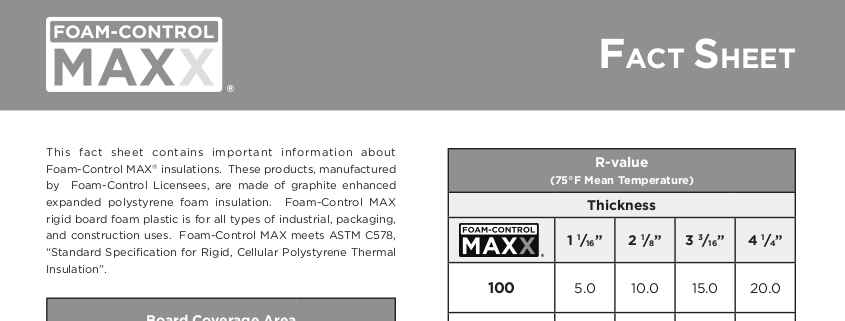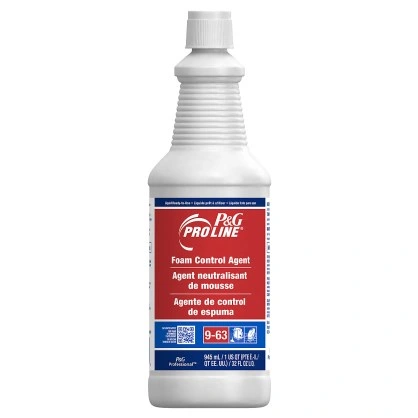The Ultimate Guide to Advanced Foam Control Techniques and Solutions
The Ultimate Guide to Advanced Foam Control Techniques and Solutions
Blog Article
Effective Methods for Attaining Optimal Foam Control in Chemical Manufacturing
Reliable foam control is a vital facet of chemical production that can considerably affect manufacturing efficiency and product high quality. By recognizing the devices of foam formation and choosing proper anti-foaming representatives, manufacturers can take proactive steps to minimize extreme foam. In addition, the execution of process optimization techniques and advanced tracking systems plays an essential duty in maintaining optimal operating conditions. The subtleties of these techniques can vary extensively throughout various applications, increasing crucial concerns regarding finest methods and real-world applications that merit further exploration.
Recognizing Foam Development

Surfactants, or surface-active representatives, minimize the surface tension of the fluid, assisting in bubble stability and advertising foam generation. In addition, anxiety or mixing procedures can improve bubble formation, usually worsening foam problems. The characteristics of the fluid medium, consisting of viscosity and density, additional influence foam actions; for instance, more thick fluids tend to catch air much more efficiently, leading to raised foam security.
Recognizing these fundamental elements of foam formation is crucial for effective foam control in chemical manufacturing. By identifying the conditions that promote foam growth, manufacturers can execute targeted approaches to reduce its damaging effects, consequently maximizing production procedures and making certain regular item top quality. This foundational understanding is crucial before checking out certain approaches for controlling foam in industrial settings.
Choice of Anti-Foaming Representatives
When picking anti-foaming representatives, it is vital to think about the details characteristics of the chemical process and the kind of foam being produced (Foam Control). Different aspects affect the efficiency of an anti-foaming agent, including its chemical structure, temperature security, and compatibility with various other process materials
Silicone-based anti-foams are widely made use of as a result of their high efficiency and broad temperature variety. They function by minimizing surface area stress, enabling the foam bubbles to coalesce and break more easily. They might not be ideal for all applications, specifically those including sensitive formulations where silicone contamination is an issue.
On the other hand, non-silicone representatives, such as mineral oils or natural substances, can be beneficial in particular scenarios, particularly when silicone deposits are unfavorable. These agents tend to be much less reliable at higher temperatures but can give reliable foam control in various other conditions.
Additionally, recognizing the foam's beginning-- whether it occurs from aeration, frustration, or chemical responses-- guides the selection process. Testing under real operating conditions is vital to guarantee that the picked anti-foaming agent meets the one-of-a-kind demands of the chemical manufacturing procedure effectively.
Refine Optimization Methods
Effective foam control is a vital facet of optimizing chemical production processes. By fine-tuning these specifications, drivers can reduce disturbance, thereby decreasing foam formation throughout mixing.
In addition, regulating temperature and pressure within the system can dramatically impact foam generation. Decreasing the temperature might reduce the volatility of particular components, bring click here to find out more about lowered foam. Also, preserving optimum stress degrees helps in reducing extreme gas launch, which adds to foam security (Foam Control).
Another effective technique is the calculated enhancement of anti-foaming representatives at crucial stages of the process. Careful timing and dosage can make certain that these representatives helpful hints properly suppress foam without interrupting various other process parameters.
In addition, integrating a systematic examination of basic material properties can assist determine inherently foaming substances, permitting preemptive actions. Carrying out regular audits and procedure evaluations can reveal inadequacies and locations for improvement, enabling continual optimization of foam control techniques.
Monitoring and Control Equipment
Tracking and control systems play an important role in keeping ideal foam management throughout the chemical production process. These systems are crucial for real-time observation and adjustment of foam degrees, guaranteeing that manufacturing effectiveness is taken full advantage of while minimizing interruptions caused by extreme foam formation.
Advanced sensing units and instrumentation are employed to find foam density and height, providing important data that notifies control formulas. This data-driven method enables the timely application of antifoaming representatives, making certain that foam levels continue to be within acceptable limitations. By incorporating monitoring systems with process control software program, producers can carry out automated reactions to foam variations, reducing the requirement for hand-operated intervention and enhancing functional uniformity.
Moreover, the combination of artificial intelligence and predictive analytics into keeping an eye on systems can promote positive foam monitoring. By analyzing historical foam data and operational criteria, these systems can anticipate foam generation patterns and advise preemptive measures. Regular calibration and maintenance of tracking devices are vital to ensure accuracy and dependability in foam detection.
Eventually, efficient surveillance and control systems are essential for maximizing foam control, advertising safety and security, and improving general productivity in chemical manufacturing environments.

Instance Studies and Best Practices
Real-world applications of tracking and control systems highlight the importance of foam monitoring in chemical manufacturing. A notable instance research Resources study involves a large pharmaceutical supplier that implemented an automated foam detection system.
An additional excellent instance originates from a petrochemical business that embraced a combination of antifoam agents and procedure optimization strategies. By examining foam generation patterns, the company tailored its antifoam dosage, causing a 25% decrease in chemical use and considerable cost financial savings. This targeted approach not just lessened foam interference but additionally improved the general stability of the manufacturing procedure.

Conclusion
To conclude, attaining ideal foam control in chemical manufacturing demands a thorough technique encompassing the option of appropriate anti-foaming agents, execution of process optimization techniques, and the assimilation of sophisticated monitoring systems. Normal audits and training even more enhance the performance of these techniques, fostering a society of continuous renovation. By dealing with foam development proactively, producers can significantly improve production effectiveness and product high quality, inevitably adding to even more economical and sustainable operations.
By understanding the systems of foam development and choosing ideal anti-foaming agents, suppliers can take proactive actions to reduce too much foam. The qualities of the fluid medium, including thickness and thickness, additional impact foam behavior; for example, even more viscous liquids tend to catch air more effectively, leading to raised foam stability.
Comprehending these basic aspects of foam formation is crucial for reliable foam control in chemical manufacturing. By examining historic foam information and operational specifications, these systems can anticipate foam generation patterns and advise preemptive actions. Foam Control. Regular audits of foam control measures make sure that procedures continue to be maximized, while fostering a culture of proactive foam administration can lead to sustainable enhancements throughout the production range
Report this page